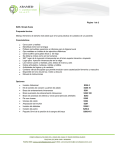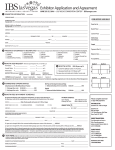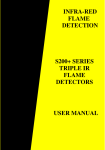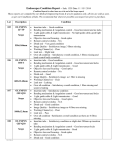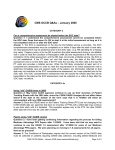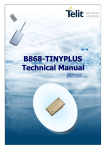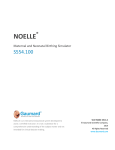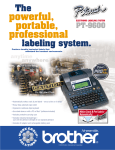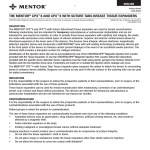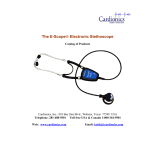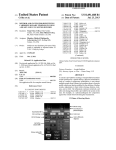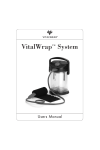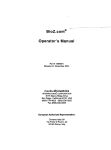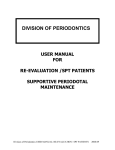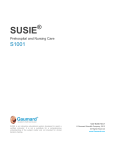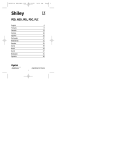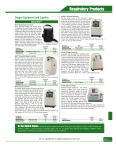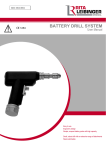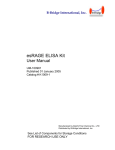Download INSTRUCTION MANUAL S200 Susie Simon S201 Susie Simon with
Transcript
INSTRUCTION MANUAL S200 Susie Simon S201 Susie Simon with Ostomy S203 Susie S204 Simon S205 Simple Simon S206 Simple Susie General Patient Care Heart and Lung Sounds Blood Pressure Auscultation Injection Training GYN Training Gaumard® Scientific 14700 SW 136 St. Miami, FL 33196-5691 e-mail: [email protected] ©2002-07 Gaumard Scientific All Rights Reserved PLEASE READ THE FOLLOWING INSTRUCTIONS PRIOR TO COMMENCING TRAINING EXERCISES ON YOUR NEW MANIKIN. HANDLE YOUR SIMULATOR IN THE SAME MANNER AS YOU WOULD HANDLE YOUR PATIENT - WITH CARE AND CONSIDERATION. SHOULD YOU HAVE ANY QUESTIONS AFTER READING THIS INSTRUCTIONAL MANUAL, PLEASE CALL Worldwide 305-971-3790 USA 800-882-6655 FAX 305-667-6085 e-mail: [email protected] 2 TABLE OF CONTENTS SECTION 1 - INTRODUCTION 5 1. Susie Simon Simulator Family 5 2. Options 7 3. Contents 8 4. Assembly 9 SECTION 2 - GENERAL CARE CAPABILITIES 10 1. Bandaging 10 2. Eyes/Ophthalmological Exercises 10 3. Teeth and Tongue 10 4. Hygienic Care 10 5. Injection Sites 11 7. Male and Female Organs 14 8. Range of Simulated Movement 14 9. Ears, Nose and Throat 14 10. Tracheotomy 14 11. Stomach 15 12. Transverse Colostomy, Ileostomy, and Suprapubic Stoma 15 13. Intestinal Tract 16 14. Urinary System 16 15. Female Catheterization 16 16. Male Catheterization 17 17. Decubitus Ulcers (optional) 19 3 18. Injection Training Arm and Hand (optional) 20 SECTION 6 - HEART AND LUNG SOUNDS (optional) 22 SECTION 7 - BLOOD PRESSURE TRAINING ARM (optional) 28 SECTION 8 - GYNECOLOGIC EXAMINATION (optional) 31 SECTION 9 - GENERAL NOTES 31 1. Lubrication 31 2. Catheters 31 3. Emptying the reservoir system 31 4. Filling the bladder 32 5. Internal Cleaning 32 6. Removal of internal tanks 32 4 SECTION 1 - INTRODUCTION This is an operating guide for six (6) simulators in the Susie Simon family which includes both male and female platforms. Susie Simon Simulator Family Model Name Number 200 Susie Simon 201 Susie Simon 203 Susie 204 Simon 205 Simple Simon 206 Simple Susie • Full-size adult manikin f f f m m f • Soft, lifelike faceskin √ √ √ √ √ √ √ √ √ √ √ √ √ √ √ √ √ √ √ √ √ √ √ √ √ √ √ √ √ √ √ √ √ √ √ √ √ √ √ • Interchangeable male organ √ √ √ • Bends at waist as in human √ √ √ √ √ √ √ √ √ √ √ √ √ √ √ √ √ √ √ √ √ √ Features • Stylish wig for haircare exercises and surgical draping • Movable jaw with tongue • Removable upper and lower dentures for oral hygiene • Realistic eyes in eyesockets For ophthalmic exercises • Ear canal for otic drops and irrigation • Mouth, nose and tracheotomy openings for naso-gastric lavage and gavage • 360° intramuscular injection site in right and left upper arm • Intramuscular injection site in buttock • Enema administration capability 5 √ Susie Simon Simulator Family Model Name Number • Realistic urethral passage and bladder for catheterization exercises • Elevating pillow increases bladder pressure for increased flow during catheterization (male or female) • Vaginal douching and pap smear exercises with realistic vagina and cervix 200 Susie Simon 201 Susie Simon 203 Susie 204 Simon √ √ √ √ √ √ √ √ √ √ √ • No drip thumb latch with audible “click” provides secure seal between ostomies and internal tanks • Soft, realistic hands, feet, fingers, and toes • Bathing and bandaging activity • Detachable and removable internal tanks • New modular tricuspid valve permits male or female catheterization with soft silicone catheters 206 Simple Susie √ √ • Sculpted stomas • Transverse colos-tomy, ileostomy, and suprapubic stoma 205 Simple Simon √ √ √ √ √ √ √ √ √ √ √ √ √ √ √ √ √ √ √ √ √ √ √ √ √ √ √ √ √ √ √ √ √ √ 6 √ OPTIONS • Intravenous training arm for injection, infusion, and blood collection procedures S261 $220 • Advanced intravenous training arm with subtle venous network. Specify right or left arm S262.100 $305 • Arterial and venous patient training arm for arterial stick exercises, arteriovenous anastomosis exercises, hemodialysis set-up, skin/tissue suture exercises, as well as intramuscular and subcutaneous injection training, intravenous infusion and injection, and blood collection procedures. Specify right or left arm S263 $625 • Blood pressure arm with programmable BP auscultation tutor. See p.31 for additional details S270 $650 • Bilateral IM sites, arms and legs S266.4 $75.00 • Site specific heart and lung sounds kit with stethoscope. See details p. 36-37 S200.100 $595 • Set of 2 decubitus ulcers, with one ulcer depicting the initial stage of ulceration and tissue infection; the other graphically depicting suppuration and deeply infected stage S264 $60 • Ulcerated foot S265 $60 • Deltoid, chest, and abdominal incisions S266.1, S266.2, S266.3 ea $30 • Amputation stump for bandaging with a unique design that permits easy placement on the manikin S267 $60 • Additional arm and buttock injection sites S268.1, S268.2 ea. $ 30 • Carrying bag S269 $85 7 Contents Upper body. An optional blood pressure arm may be attached to Susie’s left side and an optional IV arm to her right. Lower body with legs and feet. A waist rod joins the upper and lower torsos. The blue bulb shown near the right knee is used to inflate an internal cushion lifting the uterus and bladder anteriorly providing increased urinary flow. 8 Assembly To assemble Susie, unscrew one knob at either end of the waist rod, pull rod out. Make sure the white guide tube remains in place. Within the upper torso locate the stomach reservoir. Connect the tube from the stomach to the port shown above. The click valve on this tube is normally closed. You are now ready to attach the lower torso of the manikin to the upper torso. 9 Ease the lower torso into the upper torso, being careful not to disengage the stomach reservoir. Line up the holes and slide the waist rod through the white guide tube. Replace the waist knob and finger tighten. 10 SECTION 2 - GENERAL CARE CAPABILITIES 1. Bandaging The fingers and toes of this simulator are separated to permit bandaging exercises. The surface of the manikin is smooth and resistant to water, oil, and liniments. 2. Eyes/Ophthalmologic Exercises The head has removable eyes that open and close permitting the following exercises: • Administration of orbital medicines into the conjunctival sac • Removal of foreign bodies • Eye irrigation 3. Teeth and Tongue The teeth and tongue are of normal size and may be removed. 4. Hygienic Care The head of the female simulators are supplied with a wig, permitting instruction in combing, shampooing, and head draping. The manikin surface is water resistant so that bathing exercises may be practiced. 11 5. Injection Sites Sites in the upper left and right arm, as well as optional sites in the left and right thigh, allow administration of intramuscular injections. Sites are removable. Inside each site is a sponge to absorb the injectate. There is also a site in the upper gluteal region to permit intramuscular injections in the buttocks. All injection sites are easily removed and replaced. Numerous injection sites are located in the optional injection training arm and hand described later. IM site on shoulder Subcutaneous site on optional injection training arm 12 IM site on upper buttock Optional IM sites on left and right thighs 13 7. Male and Female Organs If your simulator has interchangeable male and female organs, note a red adaptor at the opening of the urethra for female catheterization exercises. This red adaptor will be removed when the male organ is used for catheterization. 8. Range of Simulated Movement The joints are strong and their movements are lifelike and realistic. The manikin bends at the waist. The head and jaw articulate. 9. Ears, Nose and Throat Left ear - the interior of the ear contains a simulated ear canal with a capacity of 10 ml, facilitating syringing exercises. Nasal/oral openings: both are connected to the stomach reservoir/tank, so that a #10 Levine tube may be used to demonstrate tube feeding and gastric suction. A gastric reservoir (capacity: 850 ml) is provided, with an opening for gastrostomy. REMEMBER TO ALWAYS USE A LUBRICANT PRIOR TO INTRODUCTION OF A LEVINE TUBE OR ANY OTHER INVASIVE DEVICE. 10. Tracheostomy An curved cavity is located at the sternal notch for placement of a lubricated trach tube. You may inflate the cuff of a Shiley 8, 14 11. Stomach The upper torso also includes a stomach tank into which a #10 Levine tube may be used to demonstrate tube feeding and gastric suction. A gastrostomy port connects directly to the stomach tank from the red flange located near the waist. ALWAYS USE A LUBRICANT WHEN INTRODUCING THE LEVINE TUBE. 12. Transverse Colostomy, Ileostomy, and Suprapubic Cystostomy The creation of an ostomy port, a temporary or permanent excretory opening, is an important part of abdominal surgery. The simulator demonstrates the appearance of ostomy openings. The Susie Simon S201 has anatomically sculptured stomas of a transverse colostomy, ileostomy, and suprapubic cystostomy, which may be performed as a result of abdominal surgery. Conventional ostomy drainage and irrigation exercises can be performed. The ostomy sites connect to reservoirs of appropriate size, and disposable or permanent ostomy bags may be applied to all openings. Exercises in skin preparation and stoma hygiene, as well as treatment of skin conditions around the sites may also be practiced. The reservoirs may be cleansed by introducing a solution of soap and water or detergent with a 60 cc. syringe. Alternatively, the reservoirs can be removed from the lower torso and cleaned. Note that the Simple Simon 205 and the Simple Susie 206 do not have ostomies or internal tanks. 15 13. Intestinal Tract Administration of an enema may be performed on all manikins except the S205 and S206. The legs articulate sufficiently to permit enema exercises with the manikin on its back. The enema should be introduced with an anal nozzle of small diameter. Remember to use a lubricant. PLEASE NOTE: A non-return valve is built into the anal canal to prevent fluid spilling during instillation. The enema reservoir capacity is approximately 750 ml. 14. Urinary System The urethral passage and the bladder (capacity: approximately 1800 ml) are connected by a valve assembly to make catheterization exercises more lifelike. Fluid can be withdrawn from the bladder after the insertion of a #18 French catheter. The suprapubic opening may be used for filling the bladder or for drainage exercises. Please note that repeated sterilization can cause a variance in catheter diameters. An older device might permit fluid leakage. Therefore, different catheters should be inserted to determine a proper fit. NOTE: ALWAYS USE A LUBRICANT WHEN INTRODUCING A CATHETER. 15. Female Catheterization Bladder catheterization may be required to remove urine. This procedure must be conducted under aseptic conditions to prevent the subsequent infection or inflammation of the urinary tract. A suprapubic cystostomy opening is present for practice in cystostomy management and maintenance. When practicing catheterization, the labia minora must be separated to examine the urethral opening, as in the female patient. The realistic simulation of the vulva area also permits instruction in asepsis and disinfection. When actually performing catheterization on the simulator, a "one eye" #18 French catheter is recommended. Smaller catheters may cause leakage. 16 Always lubricate the distal end of the catheter. Once the catheter is in place, use the blue squeeze bulb to increase bladder pressure and assure a good flow of urine. 16. Male Catheterization (All models except Simple Susie S206) Male catheterization is performed in the upright or recumbent position by the attachment of the male organ. The flexible vinyl male organ contains the urethra, which is connected to an internal urinary bladder through a one-way valve. A suprapubic cystostomy opening is also present for practice in cystostomy management and maintenance. When performing catheterization, the penis must be manipulated to permit passage of the catheter, as in the male patient. The realistic simulation of the male genitalia also permits instruction in asepsis and disinfection. When actually performing catheterization, a "one eye" #18 French catheter is recommended for the most efficient use of the simulator. The simulator also demonstrates the appearance of the ostomy opening in the patient who has had a suprapubic stoma as a result of surgery on the bladder or prostate. All suprapubic cystostomy drainage and irrigation exercises can be performed. 17 In order to perform male catheterization, this red flange must be removed and retained. Attach the male organ by inserting the tube into the urethra and securing with Velcro 18 NOTE: ALWAYS USE A LUBRICANT WHEN INTRODUCING A CATHETER. 17. Decubitus Ulcers (optional) A decubitus ulcer is caused by prolonged pressure in a patient confined to bed and in one position for a long period of time. They are also known as pressure sores or bed sores. The simulator is supplied with two of these ulcers. These ulcers are anatomically accurate. The first decubitus ulcer illustrates the initial stage of ulceration. The second decubitus ulcer illustrates the suppuration or pus/deeply infected stage. 19 18. Patient Training Arm and Hand Injection Simulator (optional) This simulator is a training tool for infusion, blood collection, intravenous injection, intramuscular injection, TB screening and subcutaneous injection exercises. The simulator is attached to the manikin, and is to be used connected to a blood dispensing bag. You may use the metal stand supplied or a conventional IV pole. The arm is also supplied with an amount of synthetic blood concentrate, and a spare arm skin. The arm and hand contain venous grooves, which are fitted with soft latex tubes that simulate the consistency of the veins. A translucent, pliable vinyl skin, which is removable and washable, is stretched over the venous structure, simulating the normal adult arm. The arm features the following: (1) subcutaneous injection areas on the volar side of the forearm and the lateral side of the upper arm; (2) an intramuscular injection site in the deltoid area; and (3) two veins in the dorsum of the hand for additional intravenous training techniques. In addition, the training arm contains simulated cephalic, basilic, antecubital, radial and ulnar veins. Simulated blood may be placed in the dispensing bag, which is equipped with a squeeze bulb. Applying pressure via the squeeze bulb permits the veins to stand out, simulating a clenched fist or tourniquet situation. Release of pressure simulates collapsed veins. Use of the squeeze bulb permits the palpability of the veins to be varied, as seen in routine hospital or emergency situations. Note that the use of cannulas/needles larger than 21 gauge will shorten the life of the venistructure. 20 REPLACING THE SKIN AND VEINS 1. To remove the vinyl outer skin, start at the top of the arm and remove by rolling it down and over the wrist. Use of water based silicone or talcum powder will ease movement. 2. Select a new skin and heat it in warm soapy water to a temperature of about 125 degrees F or about 50 degrees C. Dry the skin, and insert it onto the arm at the fist and pull the new skin up into place. 3. To replace the veins make sure you are not allergic to latex. Gaumard uses very pure latex veins to produce the best possible self-sealing possible. CLEANING & REPAIR OF THE PATIENT TRAINING ARM AND HAND 1. The skin of the training arm can be cleaned with a mild detergent, or soap and water. After drying the arm, lightly dust it with talcum powder. This will keep the training arm supple and easy to use. 2. If the venous system is blocked, first check that the tubes are not kinked. If blockage persists, remove the fist and flush veins with water. 3. Indelible marks made with ballpoint pens, ink or magic markers will remain. . 21 SECTION 6 - HEART AND LUNG SOUNDS (optional) INTRODUCTION This teaching system is used for auscultation training. RFID sensors are hidden beneath the skin in a total of 13 locations; nine on the front and four on the back. Included is a Virtual Stethoscope™ which is powered by a 9V cell. Remove the battery housing and place a fresh battery inside, being sure to make secure connections. Menus of available heart and lung sounds are attached listing the location, the sound and a brief description of the physiological condition associated with each sound. Hear the appropriate heart or lung sound as the bell of the stethoscope is moved across the front or the back of the torso. An external speaker, which must be powered through a wall outlet, is supplied so that the Instructor can allow the classroom to hear what the student is hearing through the stethoscope. 22 The vest overlay contains RFID tags that communicate with the Virtual Stethoscope so that the heart or lung sound appropriate for that location is heard. The vest is supplied with blue stick-on dots that may be easily removed by the Instructor. The four lung fields may also be heard on the back of the patient. 23 LOCATION HEART SOUND COMMENT Base Right Base Sound Patient has a normal heart with mild anemia. The heart is hyperdynamic and has elevated cardiac output. S2 is accentuated at the base. Fixed Split S2 Patient has an atrial septal defect which increases flow through the right heart, prolongs RV systole and also produces a midsystolic murmur (MSM) because of increased flow through the RV outflow tract. Physiological Split S2 The splitting of S2 is easily heard during inspiration and the second sound is single during expiration. The second component of the split sound (P2) is accentuated. Split S2 S2 is variably split during mid-inspiration, as three beats are repeated. Paradoxical Split S2 The splitting of S2 is heard during expiration, but the sound becomes single during inspiration. (The background noise is increased during inspiration.) Opening Snap Patient has mitral stenosis, responsible for an early crisp diastolic sound heard at the base 0.08 seconds after S2. S1 is usually loud at the base, which reflects mitral stenosis. Friction Rub Patient has uremic pericarditis, which leads to rubbing of roughened visceral and parietal pericardial surfaces against one another. The 3 component rub exists during deep inspiration. Base Left Left Side Sternal Border 24 LOCATION HEART SOUND COMMENT Apex Apex Sound Patient has a normal heart with mild anemia. The heart is hyperdynamic and has elevated cardiac output. Mid-Systolic Click Patient has mitral prolapse, which produces a mid-systolic click heard during inspiration. S3 Sound Patient has a readily heard third heart sound. S3 occurs later in diastole than the opening snap. Intermittent S4 Patient has left ventricular hypertrophy, and has a fourth sound (S4) which is not heard on every cycle. The sound is presystolic, about 0.1 second before S1. Starr-Edwards Valve This ball-in-cage mitral prosthesis has a mechanical closing sound (S1) and one or more diastolic sounds caused by the ball bouncing within the cage. 25 LOCATION LUNG SOUND COMMENT Trachea Tracheal Sounds Expiration sounds are louder, have a higher pitch, and are of longer duration than during inspiration. The silent period or pause following expiration is longer than the one between expiration and inspiration. Stridor Sounds Patient has marked respiratory distress, and a narrow aperture between the vocal cords that produces a high pitched tone during both inspiration and expiration. During the end of expiration, there is an abrupt drop in pitch. Bronchial Sounds Breath sounds are similar to tracheal sounds in that the expiratory phase is louder and lasts longer than the inspiratory phase. The major distinguishing characteristic is the high pitched, hard quality of the expiratory phase. Wheezing Sounds These musical wheezing sounds are often heard in asthma patients. During inspiration, the wheeze is slightly higher in pitch than during expiration. Wheezing in asthmatics is often present in either one or both phases of respiration. Upper Anterior (Two Sites) Lower Anterior (Two Sites) Bronchial Sounds Breath sounds are similar to tracheal sounds in that the expiratory phase is louder and lasts longer than the inspiratory phase. The major distinguishing characteristic is the high pitched, harsh quality of the expiratory phase. 26 LOCATION LUNG SOUND COMMENT Posterior (Four Sites) Wheezing Sounds These musical wheezing sounds are often heard in asthma patients. During inspiration, the wheeze is slightly higher in pitch than during expiration. Wheezing in asthmatics is often present in either one or both phases of respiration. Pleural Friction This sound probably originates from the friction of inflamed pleural surfaces moving against one another. The sound is repetitive as long as the breathing pattern and position remain constant. Similar to but lower in pitch than crackles. Medium-Fine Crackles These noises begin about mid-inspiration and progressively increase in intensity up to the end of expiration. Coarse crackles are also audible in the early expiratory phase of some of the breaths. Ronchi, Crackles Coarse crackles are present during both inspiration and expiration. There are also some very low pitched repetitive sounds that are ronchi. High pitched squeaks are also audible against a background of bronchial breath sounds. Coarse Crackles Coarse crackles begin at the onset of inspiration and diminish in intensity and prevalence toward the end of inspiration. Expiration is not audible. Pulmonary Edema Coarse and medium crackles appear toward the end of inspiration and continue into expiration. The respiratory rate is rapid and expiratory phase is “bronchial” in character. These features exist during respiratory distress and congestion. 27 SECTION 7 - BLOOD PRESSURE TRAINING ARM (optional) Assembly Connect the electrical cable leading to the blood pressure arm to the BP Auscultation Tutor, being careful to not damage the four pins found within the cable connector. Connect the power supply to the Tutor. You may have to supply a mechanical adaptor to access the wall outlet in your area. Now connect the long clear tube extending from the sphygmomanometer assembly to the BP Tutor. Wrap the BP cuff around the left arm midway between the deltoid and elbow. 28 Operation Turn the power switch “ON”. Do not press “Calibrate”. Note you may palpate the wrist and feel the radial pulse. The BP Tutor normally remembers the previous settings. We use these settings to simulate a hypertensive patient having an auscultation gap. The challenge for the student is to recognize that the systolic is 150 not 120. The 150 may suggest hypertension, while 120 would be incorrectly interpreted as normal. Systolic Diastolic Upper auscultation gap Lower auscultation gap Pulse 150 90 140 120 80 K1 starts here K4 ceases then K5 silence K sounds cease but pulse continues K sounds resume Calibration Calibration may be required. In the event the Instructor notes that the recorded pressure varies significantly from the pressure on the sphygmomanometer, you may recalibrate as follows: 1. Press Calibrate, then Start, and the display will show “CAL 000” 2. Press Calibrate, then Start, again and the display will show “CAL 128” Inflate the cuff to read 128 on the dial of the sphygmomanometer. 3. Press Calibrate, then Start, again and the display will show “CAL 256” Inflate the cuff to read 256 on the dial of the sphygmomanomater. 4. Now inflate the blood pressure cuff to read 256 and press Calibrate Start again. 5. At this time, the BP Tutor will display the reading on the sphygmomanometer. Lower the cuff pressure to zero and watch the display track the sphygmomanometer. 29 Blood Pressure Training Turn the Tutor ON and observe the previously selected values: 1. Press Systolic and observe the value. If you agree, press Systolic again and that number is locked in. To increase or decrease the Systolic pressure, press the UP or DOWN red arrows. When the desired value is reached, press Systolic once more and the new value is locked in. 2. Proceed with Diastolic, Upper Auscultation Gap, Lower Auscultation Gap, and Heart Rate in the same manner. Once selected, each value will disappear so that the student cannot see them. 3. Instruct the student to take the blood pressure by attaching the BP cuff and placing the bell of a conventional stethoscope over the speaker concealed in the antecubital region of the arm near the elbow. 4. Instruct the student to pump up the cuff until the radial pulse is no longer felt. Now slowly release the cuff pressure until the first Korotkoff sound is heard indicating the Systolic pressure. Decrease cuff pressure further and hear K2, K3, K4. The K5 sound is silence. If an auscultation gap was programmed, the student will not hear Korotkoff sounds between the upper and lower limits. 5. Ask the student to record the observed systolic pressure, the diastolic pressure, the limits of auscultation gap (if any) as well as the pulse rate. Compare the values observed by the student with those originally selected in order to assess student competency. 30 SECTION 8 – GYNECOLOGIC EXAMINATION The Susie Simon features a full-size adult female lower torso, consisting of the abdomen and pelvis suitable for practice in vaginal speculum examination and diaphragm sizing and fitting. A tenaculum forceps can be used to grasp the cervix and pull it toward the student for examination. SECTION 9 - GENERAL NOTES 1. Lubrication ALWAYS USE A LUBRICANT WHEN INTRODUCING A CATHETER OR INVASIVE DEVICE 2. Catheters - Troubleshooting There may not be an immediate outflow of water on introduction of the catheter into the bladder. Should blockage occur, use the blue squeeze bulb at the side of the lower torso to increase pressure in the bladder. 3. Emptying the Reservoir System To remove the remaining fluid from the bladder reservoir after catheterization exercises are complete, lift the abdominal cover and remove the reservoir. 31 4. Filling of the Bladder The bladder should be filled through the suprapubic opening. This may be done in one of two ways. Instillation of water (approximately 500 ml into the1800 ml tank) through introduction of an appropriate funnel at the suprapubic site; or, by using a catheter with a large syringe. 5. Cleaning The manikin may be cleaned with a mild detergent, or with soap and water. Do not clean with harsh abrasives. • Indelible marks made with ballpoint pens, ink, or markers will remain. • Store the manikin in a cool area in the box provided. Do not stack heavy materials on top of the box • Do not wrap the manikin or any Gaumard product in newsprint. 6. Removal of Internal tanks (reservoirs) The lower torso contains several reservoirs for patient care exercises. Each is connected using “click” connectors permitting that reservoir to be removed and cleaned or replaced as needed. SHOULD YOU HAVE ANY QUESTIONS AFTER READING THIS INSTRUCTION MANUAL, PLEASE CONTACT OUR CUSTOMER SERVICE DEPARTMENT FOR FURTHER ASSISTANCE: 800-882-6655 Toll Free USA 305-971-3790 Worldwide 305-667-6085 Fax OR E-MAIL US AT: [email protected] Gaumard Scientific 14700 SW 136 Street Miami, FL 33196 www.gaumard.com 32 33

































